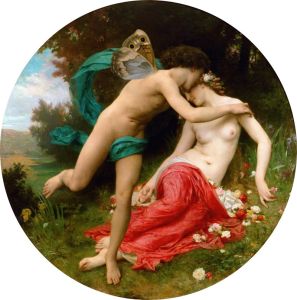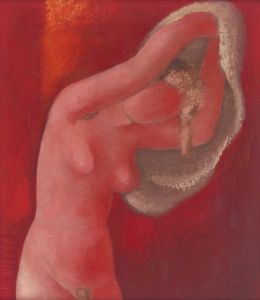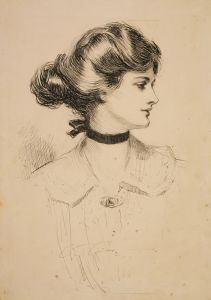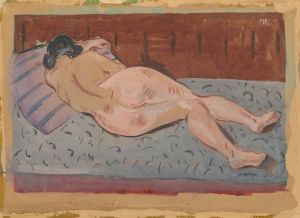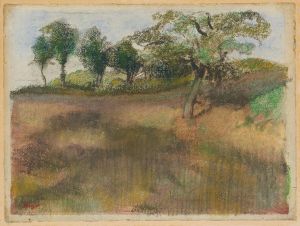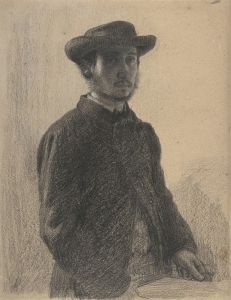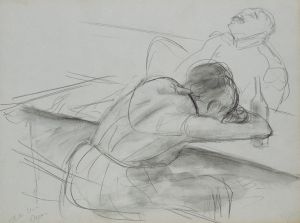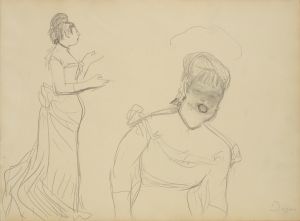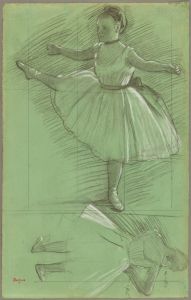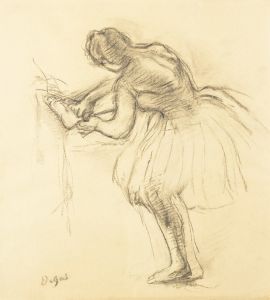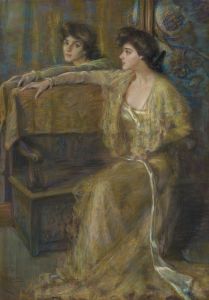
To studier af danserinder Øverst danserinde stående på venstre ben; nederst foroverbøjet danserinde set fra ryggen
A hand-painted replica of Edgar Degas’s masterpiece To studier af danserinder Øverst danserinde stående på venstre ben; nederst foroverbøjet danserinde set fra ryggen, meticulously crafted by professional artists to capture the true essence of the original. Each piece is created with museum-quality canvas and rare mineral pigments, carefully painted by experienced artists with delicate brushstrokes and rich, layered colors to perfectly recreate the texture of the original artwork. Unlike machine-printed reproductions, this hand-painted version brings the painting to life, infused with the artist’s emotions and skill in every stroke. Whether for personal collection or home decoration, it instantly elevates the artistic atmosphere of any space.
Edgar Degas, a prominent French artist associated with the Impressionist movement, is renowned for his depictions of dancers. One of his works, "To studier af danserinder Øverst danserinde stående på venstre ben; nederst foroverbøjet danserinde set fra ryggen," showcases his fascination with the human form and movement. The title, translated from Danish, means "Two Studies of Dancers: Above, Dancer Standing on Left Leg; Below, Bent-Over Dancer Seen from the Back." This piece exemplifies Degas's interest in capturing the grace and dynamism of ballet dancers, a subject he explored extensively throughout his career.
Degas's approach to painting dancers was innovative for his time. He often depicted them in candid, informal poses, capturing moments of rehearsal rather than the polished performances typically shown in art. This focus on the behind-the-scenes aspects of ballet allowed Degas to explore the physicality and discipline of dance, presenting dancers as both ethereal and grounded figures. His works often highlight the tension between the elegance of the dance and the strenuous effort required to achieve it.
In "Two Studies of Dancers," Degas employs a keen observational eye to render the dancers with precision and sensitivity. The upper study features a dancer standing on her left leg, a pose that suggests balance and poise. The lower study presents a dancer bent over, viewed from the back, emphasizing the curvature of her spine and the musculature involved in her movement. These studies reflect Degas's interest in anatomy and his ability to convey the subtleties of the human body in motion.
Degas's technique in this work, as in many of his dancer studies, involves a combination of drawing and painting. He often used pastels, a medium that allowed him to achieve a soft, luminous quality in his depictions of dancers. The choice of medium and his skillful application contribute to the sense of immediacy and intimacy in his studies, inviting viewers to appreciate the fleeting beauty of the dancers' movements.
Throughout his career, Degas returned to the theme of dancers repeatedly, producing numerous paintings, drawings, and sculptures. His works are celebrated for their innovative compositions, use of color, and ability to capture the essence of movement. Degas's dancer studies, including "Two Studies of Dancers," have had a lasting impact on the art world, influencing generations of artists who followed.
Degas's fascination with dancers was not merely an artistic choice but also a reflection of his personal interests. He was a frequent visitor to the Paris Opéra, where he observed dancers in their daily routines. This access allowed him to study their movements closely and develop a deep understanding of the discipline and artistry involved in ballet. His works provide a unique glimpse into the world of 19th-century ballet, offering insights into the lives of dancers and the cultural significance of dance during this period.
In summary, "Two Studies of Dancers" by Edgar Degas is a testament to the artist's mastery in capturing the human form and his enduring interest in the world of dance. Through his innovative approach and keen observation, Degas created works that continue to resonate with audiences, celebrating the beauty and complexity of ballet.





